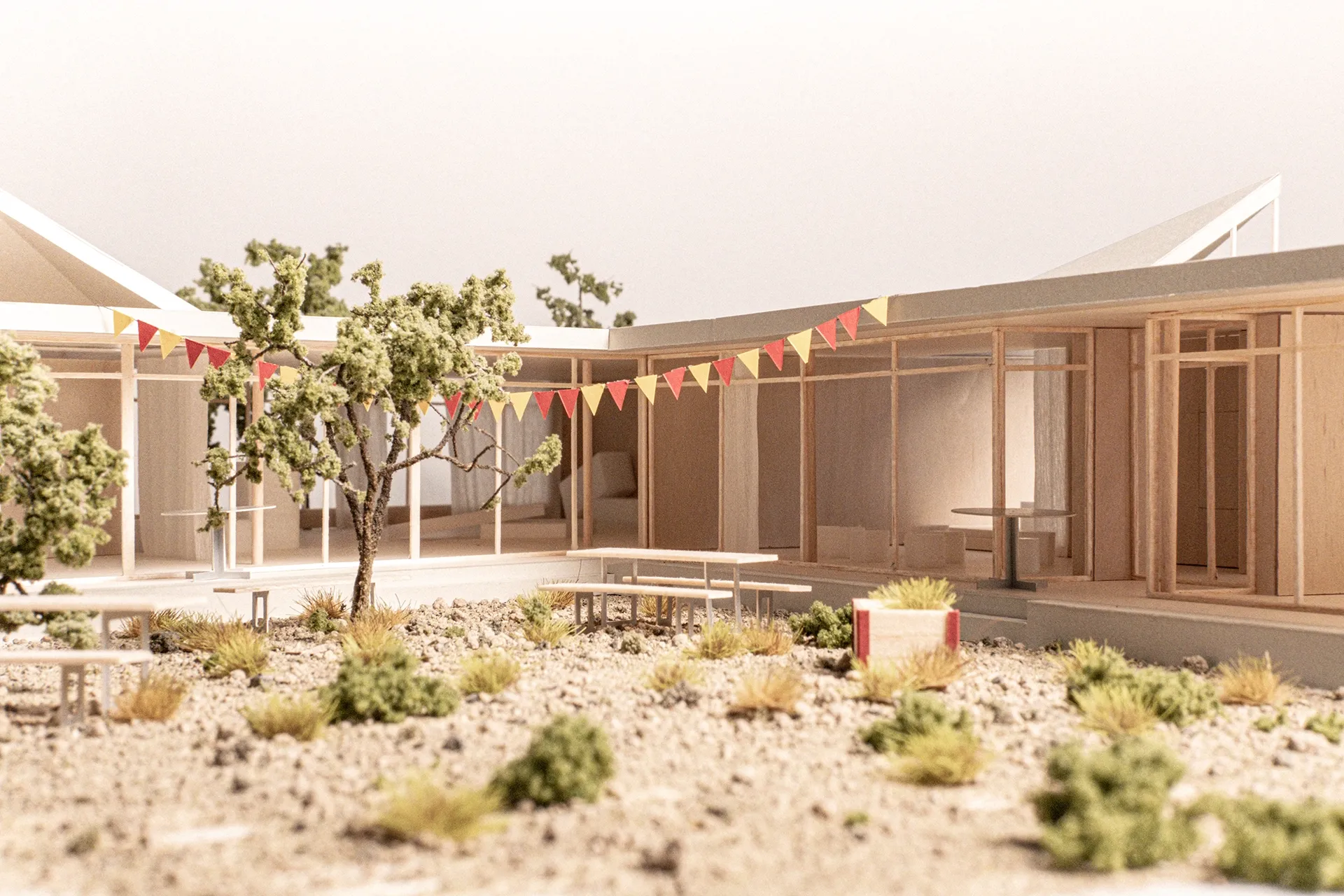When the city comes to school
The new all-day school on Antonie-Lehr-Straße in Vienna is an open building. Its flexible architecture communicates intensively with the urban space and makes the all-day school an important public place in the new Donaufeld Süd-Ost district.
When the city comes to school
- Programme
All-day school
- Size
16,360 m² gross floor area above and below ground
- Status
Open competition 2025, participation with Wendl ZT GmbH
- Place
Antonie-Lehr-Straße Donaufeld Süd-Ost, Vienna, Austria
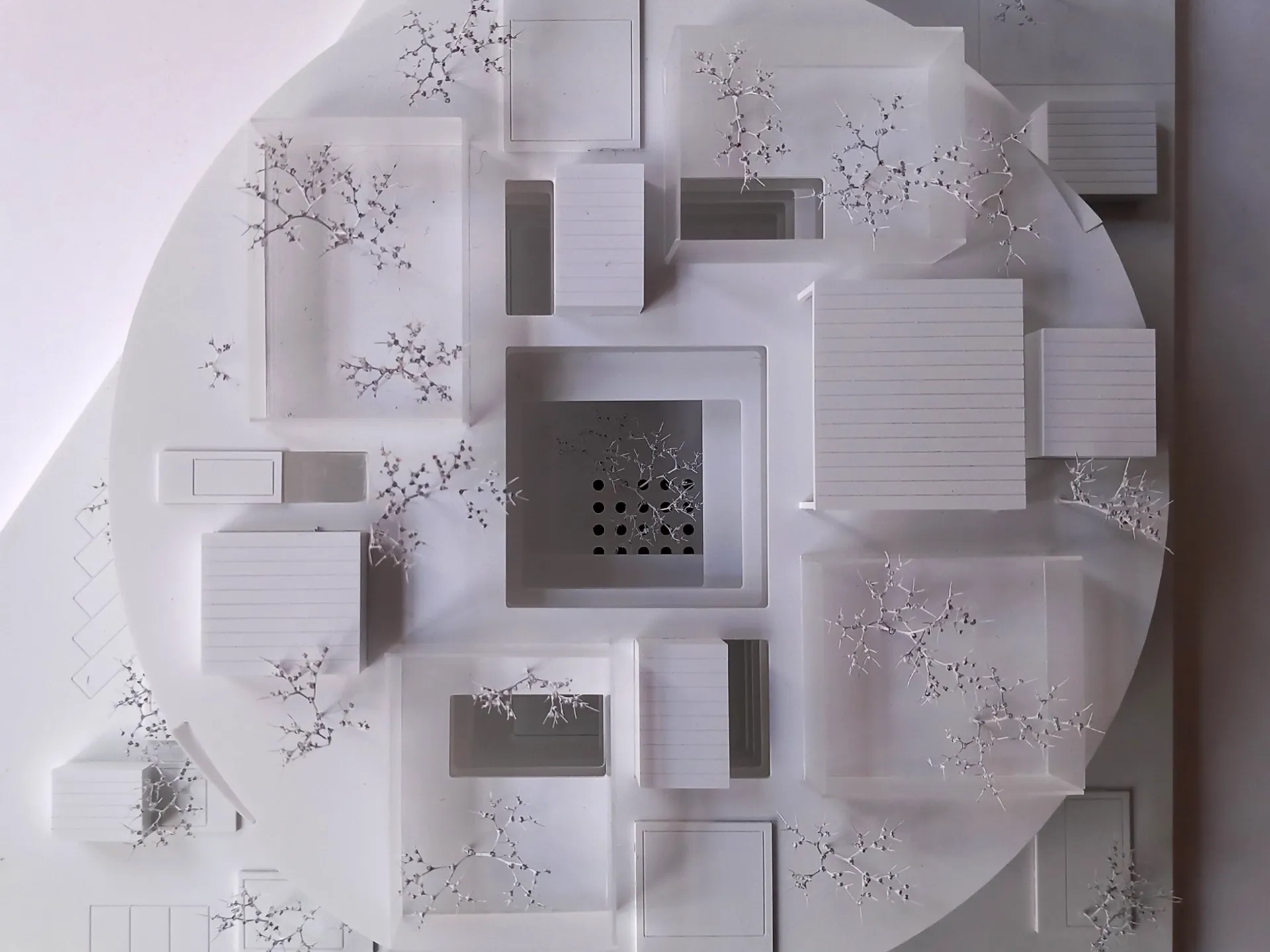
The school as a connecting link: a building, but also part of the park.
The new all-day school building on Antonie-Lehr-Straße is circular. Located at the intersection between the Donaufeld Süd-Ost urban district and the new DonauGRÜNde neighborhood park, the school serves as a connecting link: it is a building, but also part of the park. The neighborhood park continues around the school—the new school is located in the park.
New urban spaces
The location of the all-day school in the middle of the construction site creates new urban spaces for the neighborhood: in the southeast, the new school forecourt with a connection to the urban district; in the southwest, a town square oriented towards the DonauGRÜNde neighborhood park; and in the north, a publicly accessible play, sports, and nature area. An atrium in the center of the school is also part of the public space as a campus: this is where the city comes into the school.
The ground floor of the all-day school is open to the public, and a diagonal path connects the school forecourt in the southeast via the central atrium to the neighborhood park in the west. Numerous school facilities are located directly on the public space and activate it: the foyer opens onto the school forecourt, the multi-purpose music room can also use the central atrium, and the gym can be extended into the play, sports, and nature area via a grandstand.
Public and private open spaces
All open spaces on the ground floor are accessible to the public. The immediate surroundings of the school form an urban square where plant troughs that can be used as seating and reclining furniture invite visitors to linger. The school's play and sports area in the center of the property transitions into a natural landscape with gentle terrain formations and wild meadows, woods, and shrubs at the northern tip of the property.
The roof garden is reserved for school use. Here there are green areas for exercise and play, pergolas with PV roofing for learning purposes, and water basins with relaxation areas.

Axonometry

Site plan
Open architecture
The new all-day school building presents itself as an open structure that can be flexibly used on five floors and adapted to changing needs. Numerous patios cut into the floors bring plenty of light into the depths of the building and, in addition to the central public atrium, create intimate outdoor spaces for the school. On the outside of the building, surrounding green learning terraces establish visual connections with the urban space. External staircases connect all outdoor areas and lead directly from the educational clusters to the school's roof garden.
The village as an educational cluster
The educational clusters are organized like a village: educational, team, and ancillary rooms are freely arranged in the floor plan, and the surrounding traffic routes merge with numerous multifunctional areas to form an open learning landscape. Large-format sliding doors allow educational rooms and multifunctional areas to be interconnected, while windows create visual connections between educational rooms, extension rooms, and multifunctional areas. Open-plan classrooms are directly connected to multifunctional areas and offer generous views of the city.
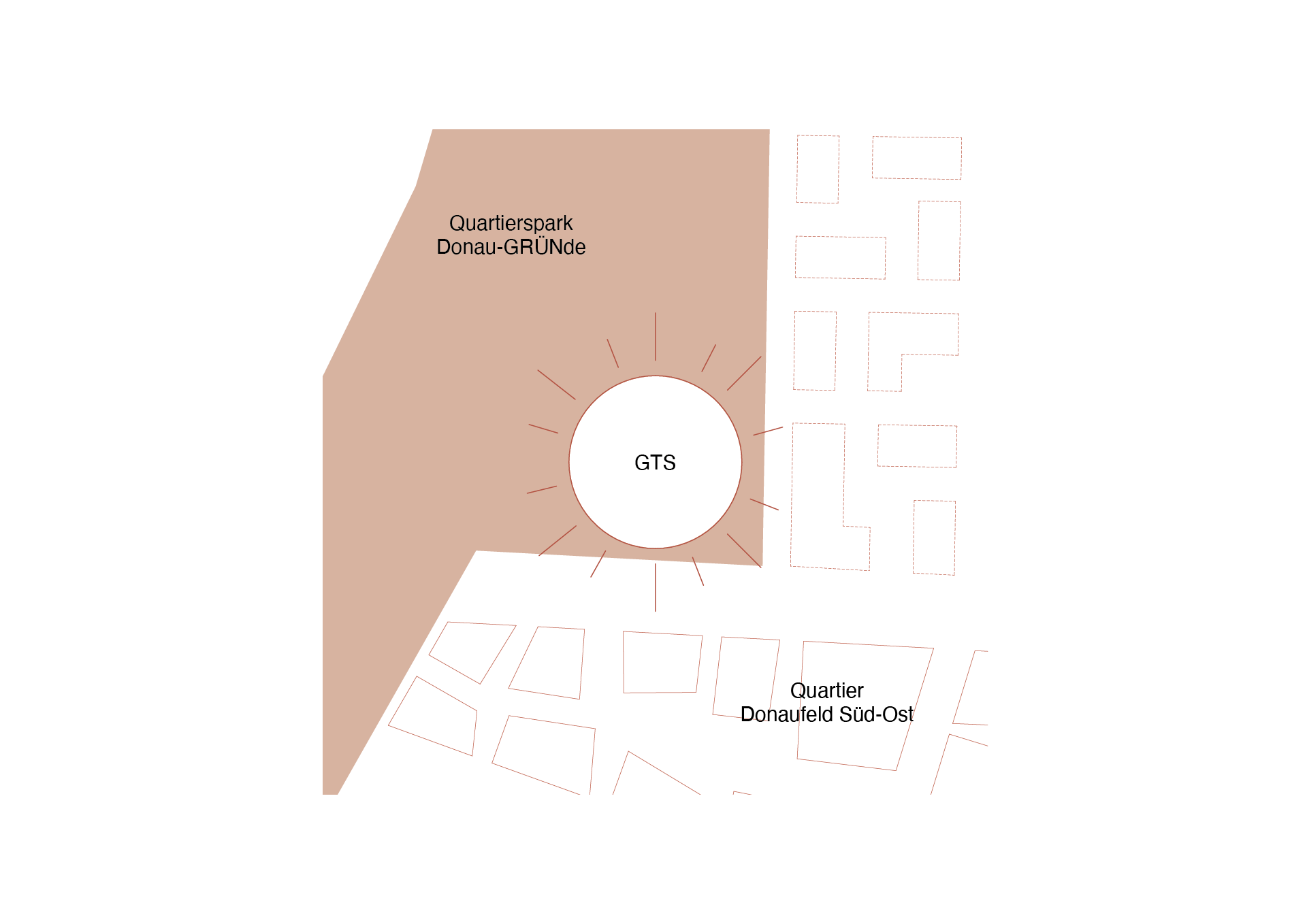
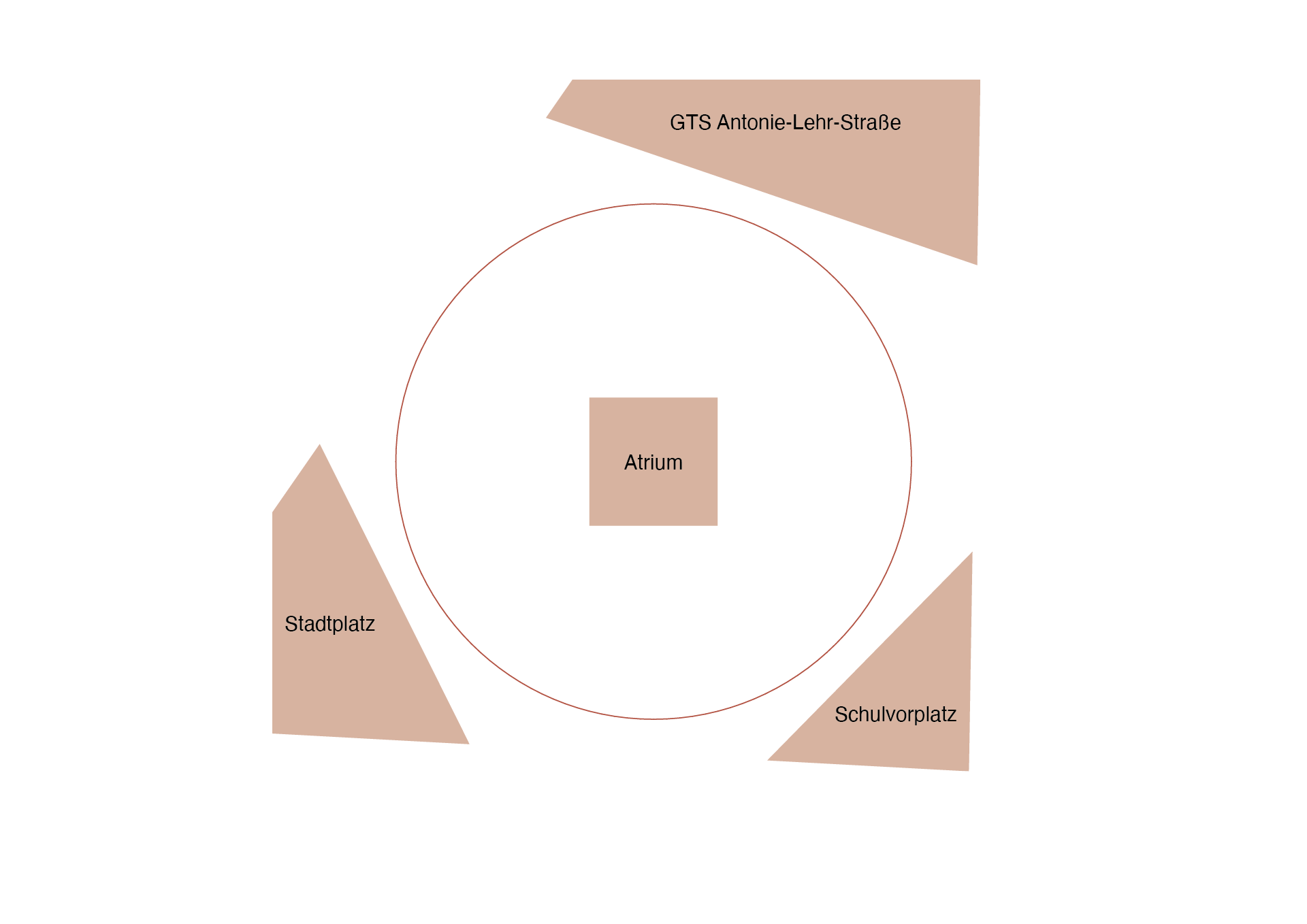
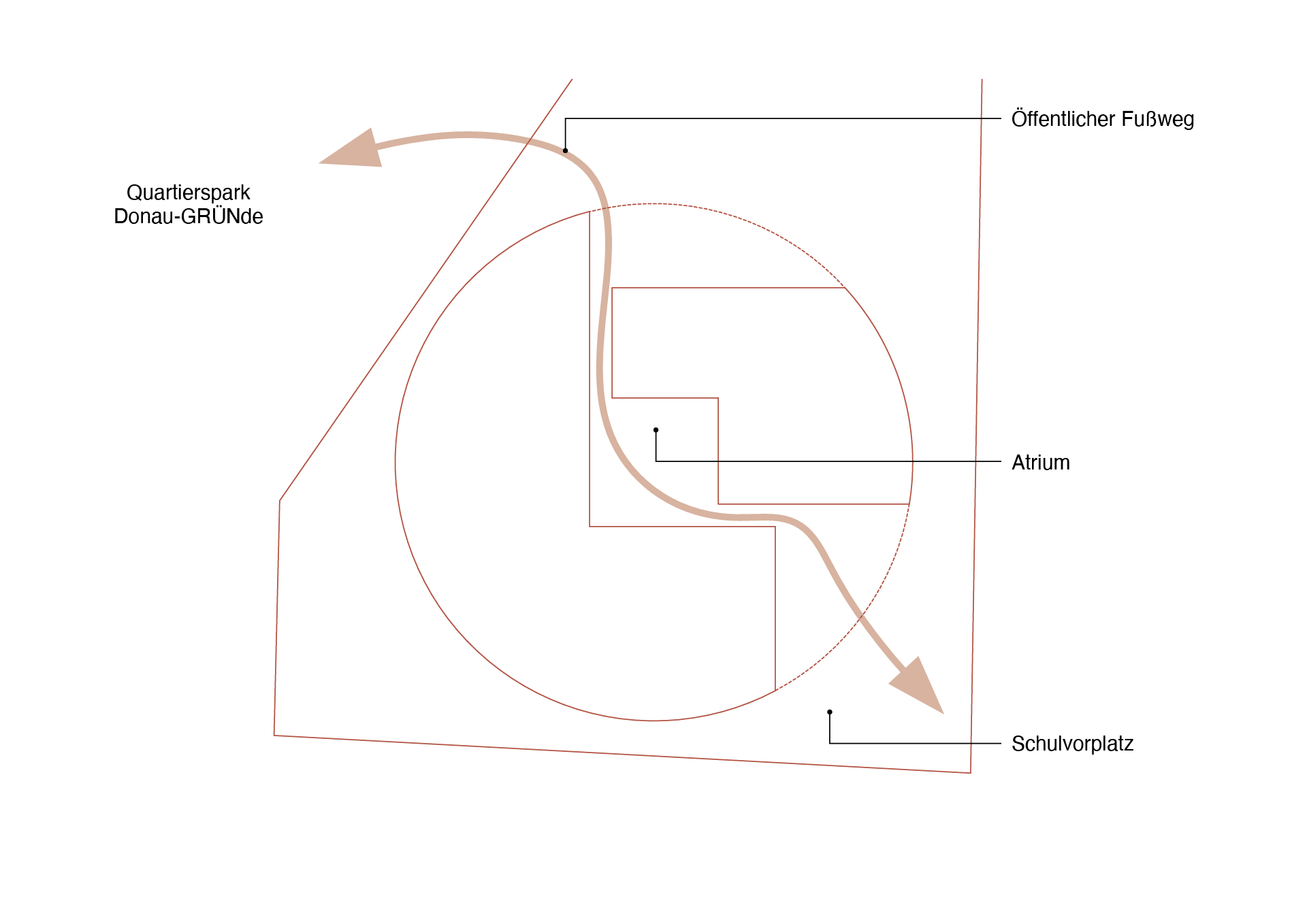

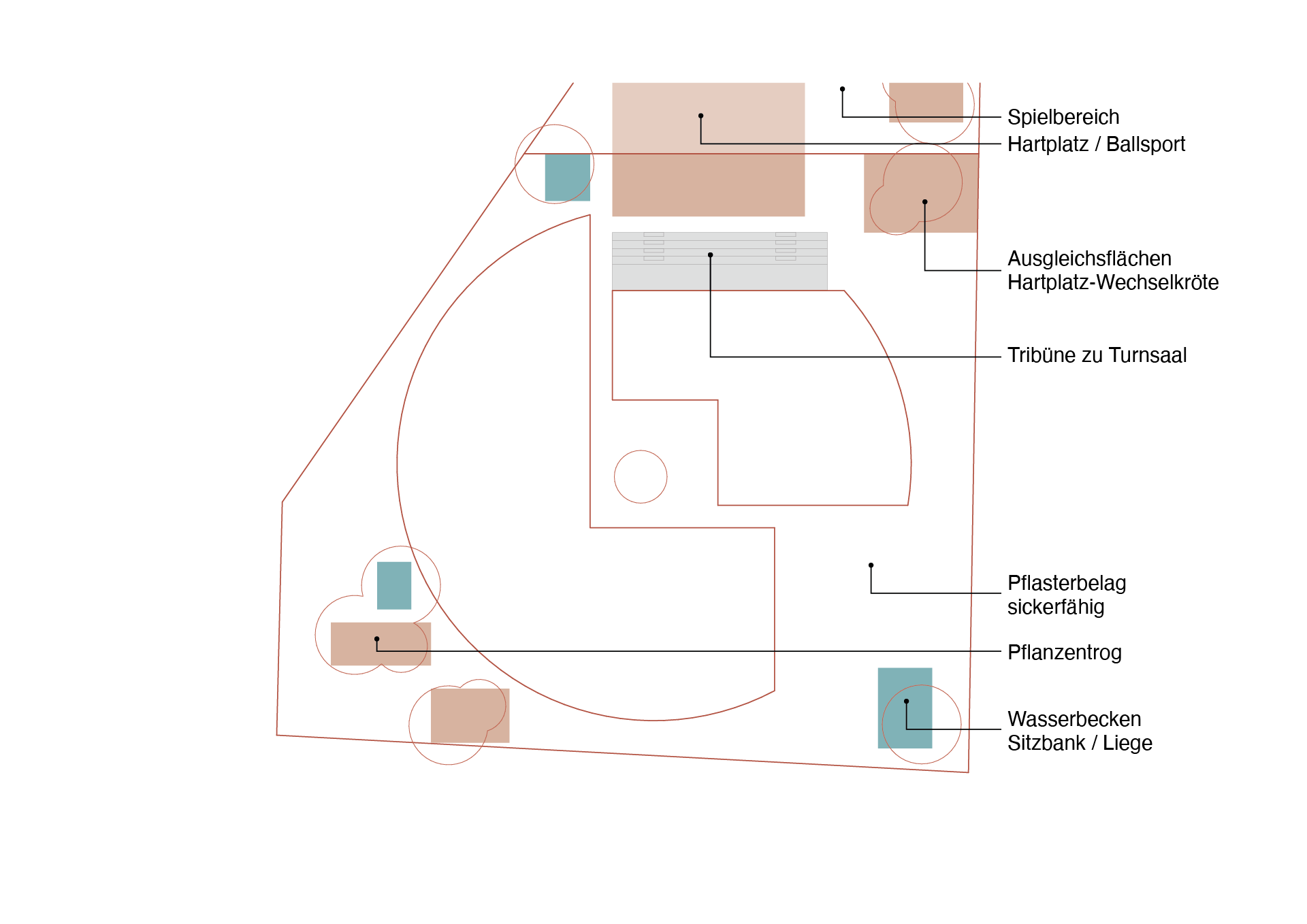

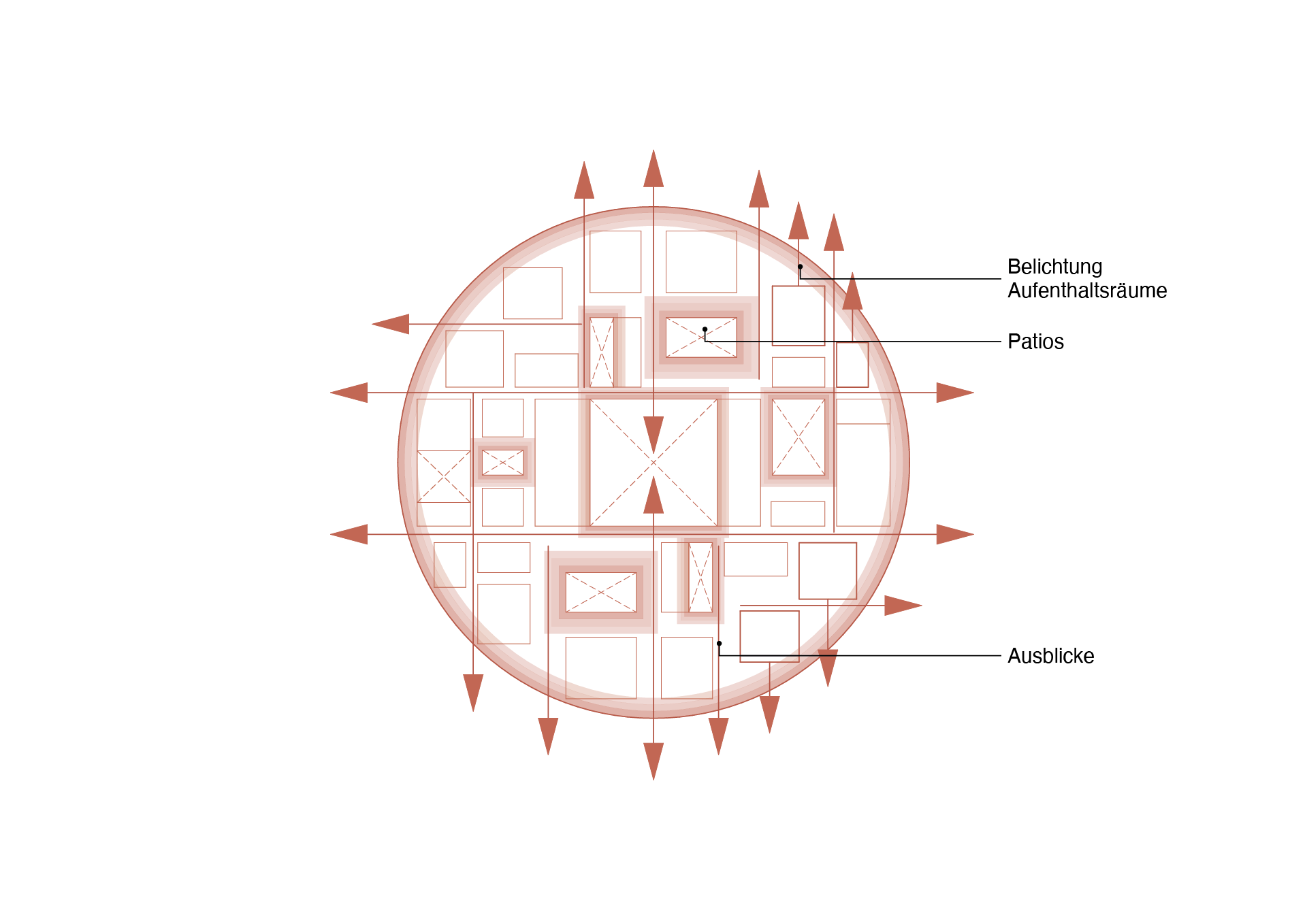
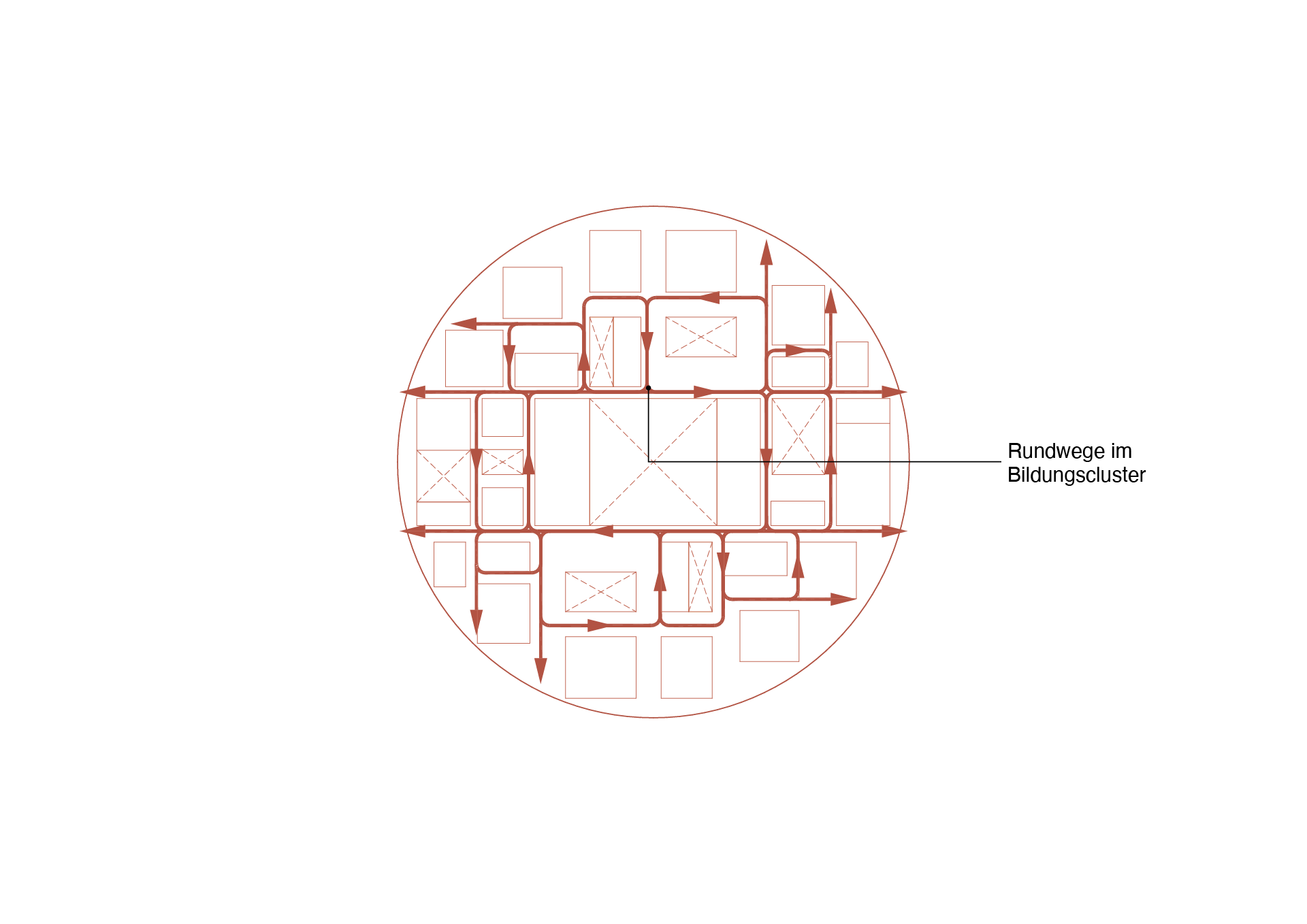
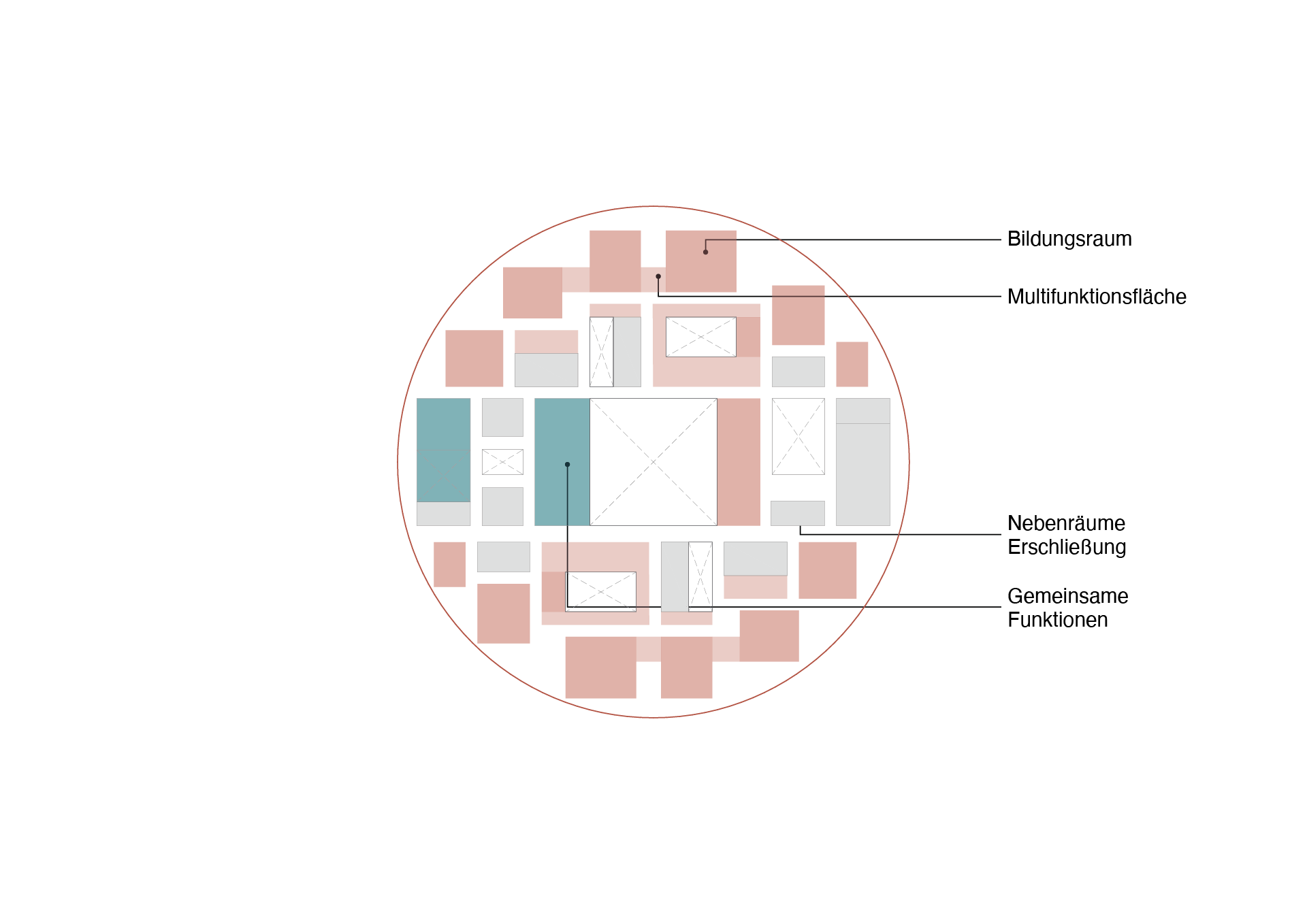

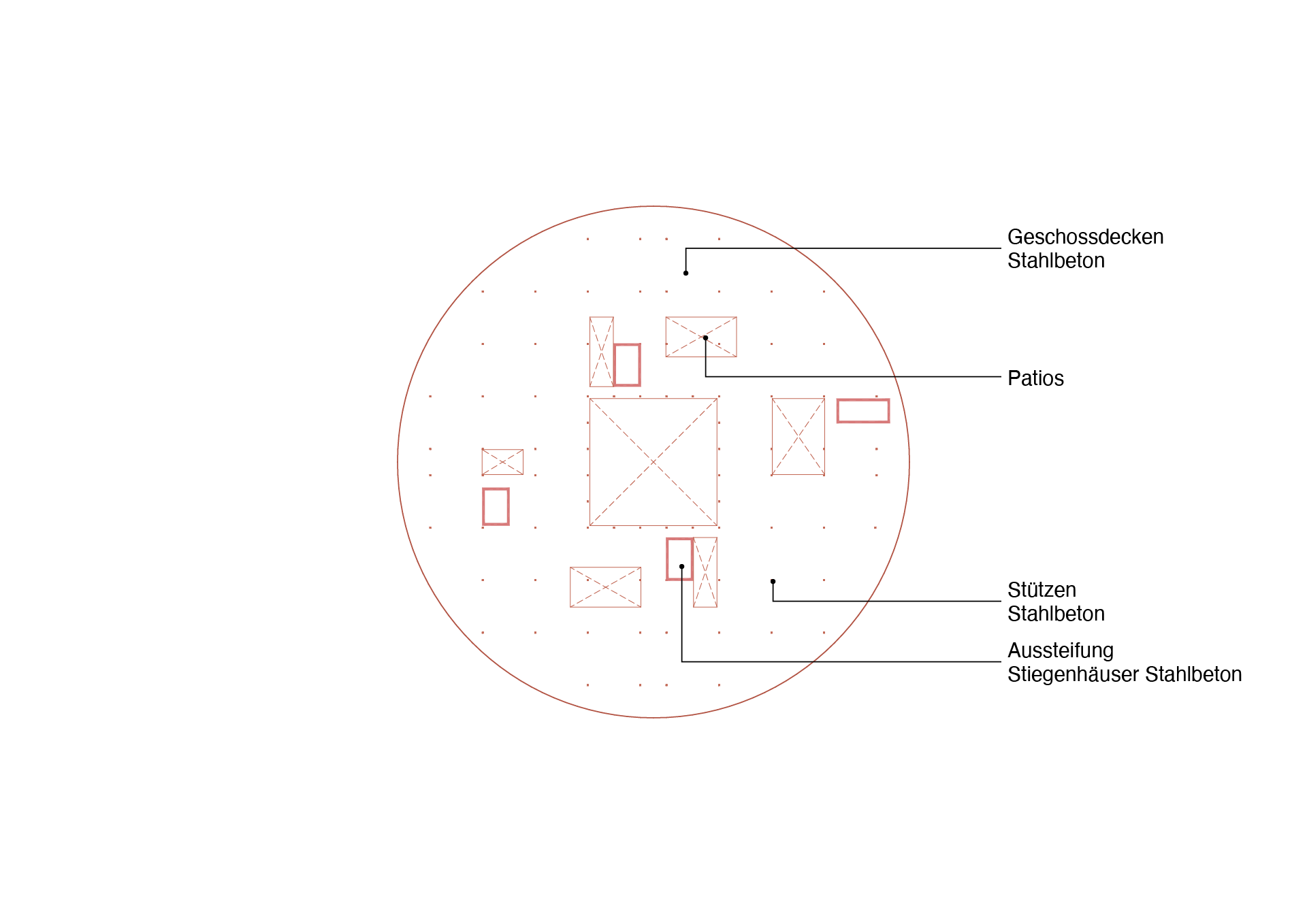
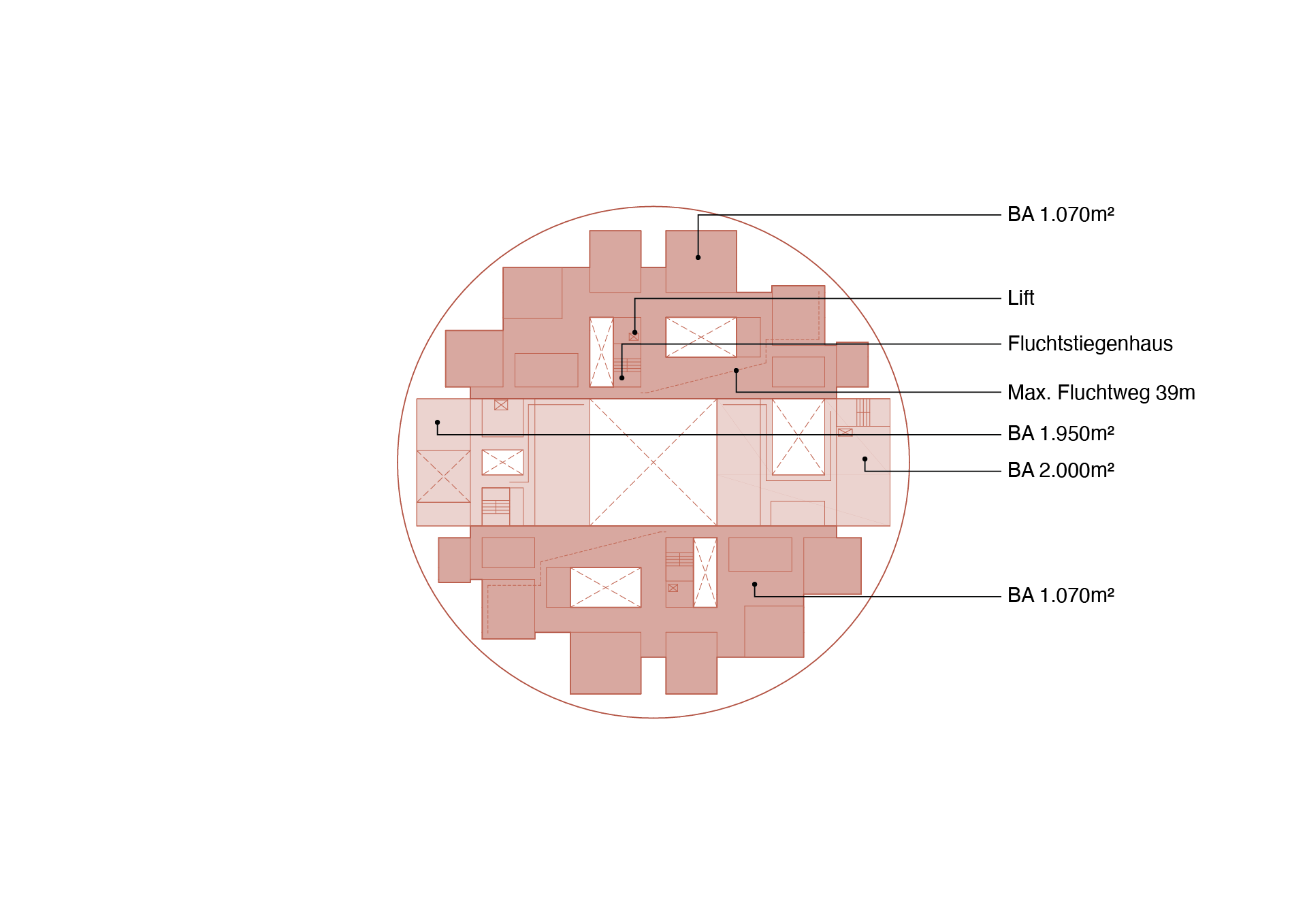
The school as part of the park
Sustainability
Thanks to its robust, neutral, and flexibly adaptable building structure, the school building can also be adapted to future requirements and can remain in use for a long time. A low surface-to-volume ratio contributes to reducing construction and operating costs.
The all-day school is being built using a hybrid timber construction method. Primary structures such as ceilings, columns, and stairwells are made of reinforced concrete, while facades, windows, doors, and partition walls are made of timber. Reinforced concrete floor slabs are used for component activation, and recycled materials are used as aggregates to reduce the CO2 emissions of the reinforced concrete. The curtain walls have a single-material structure and are insulated with wood-based materials.
Interior surfaces are finished in wood or wood-based materials. Acoustic ceilings are suspended from the raw ceiling only in areas where necessary, with pipes and cables routed openly under the raw ceiling. This eliminates the need for suspended ceilings and reduces the floor height from the first floor upwards to 3.60 m.
Geothermal energy is used for heating and cooling, with district heating covering peak demand. Electricity for operating heat pumps and the school's power requirements is generated by PV systems on the roof. Classrooms and workrooms are ventilated by decentralized CO2 comfort fans with heat recovery. Shading is provided by the widely projecting floor slabs on the outside of the building; if necessary, additional external sun protection can be used in some areas.
Fire protection concept
The floor levels are divided into four fire compartments with a maximum size of approx. 2,500 m² (fire alarm system), which ensures that people who are unable to escape on their own can be evacuated via the next fire compartment. Due to the circular shape of the building, the next fire compartment can be reached via two routes.



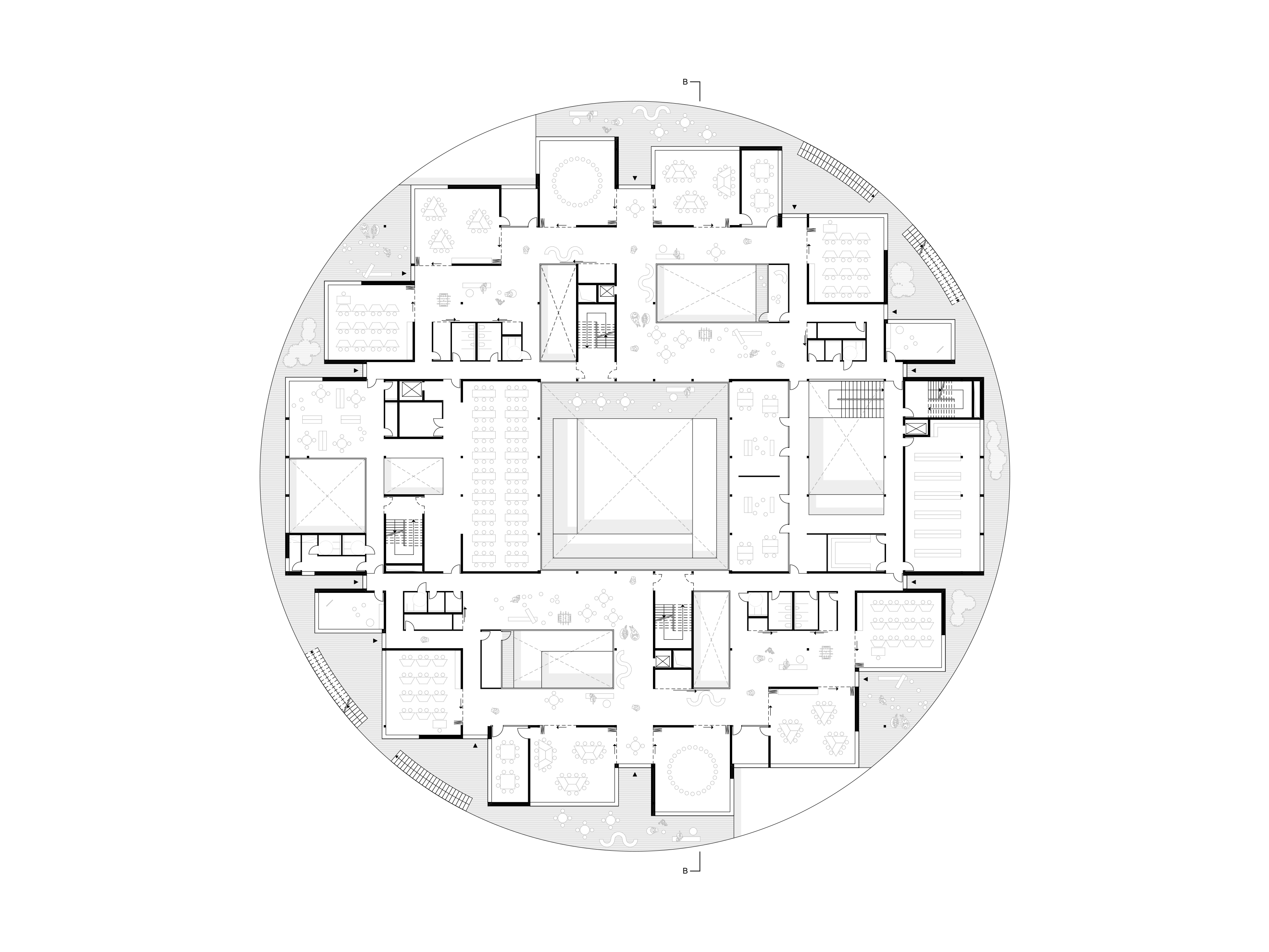


Floor plan ground floor
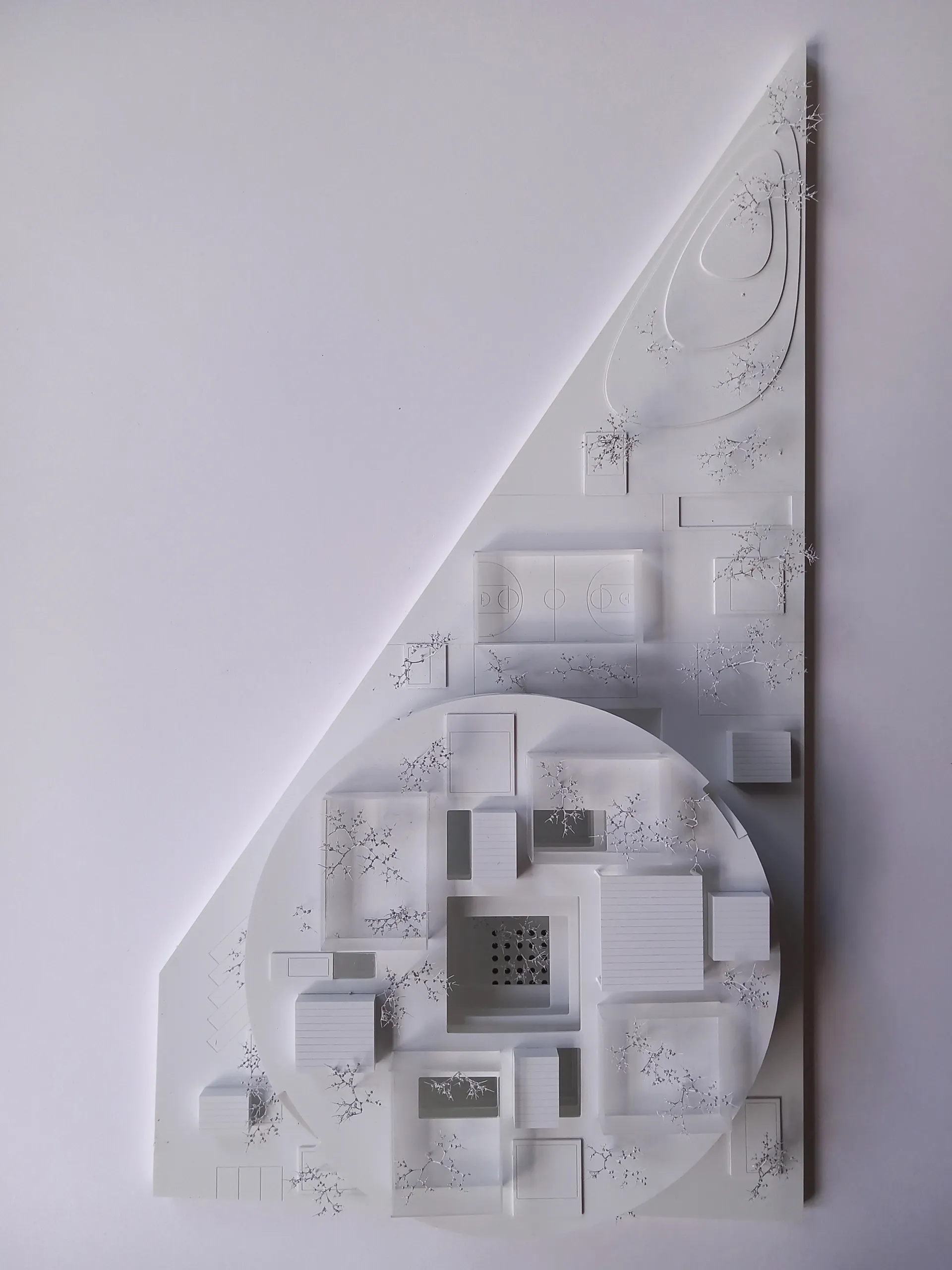
Top view with open space design

External staircases connect all outdoor areas and lead directly from the educational clusters to the school's roof garden.
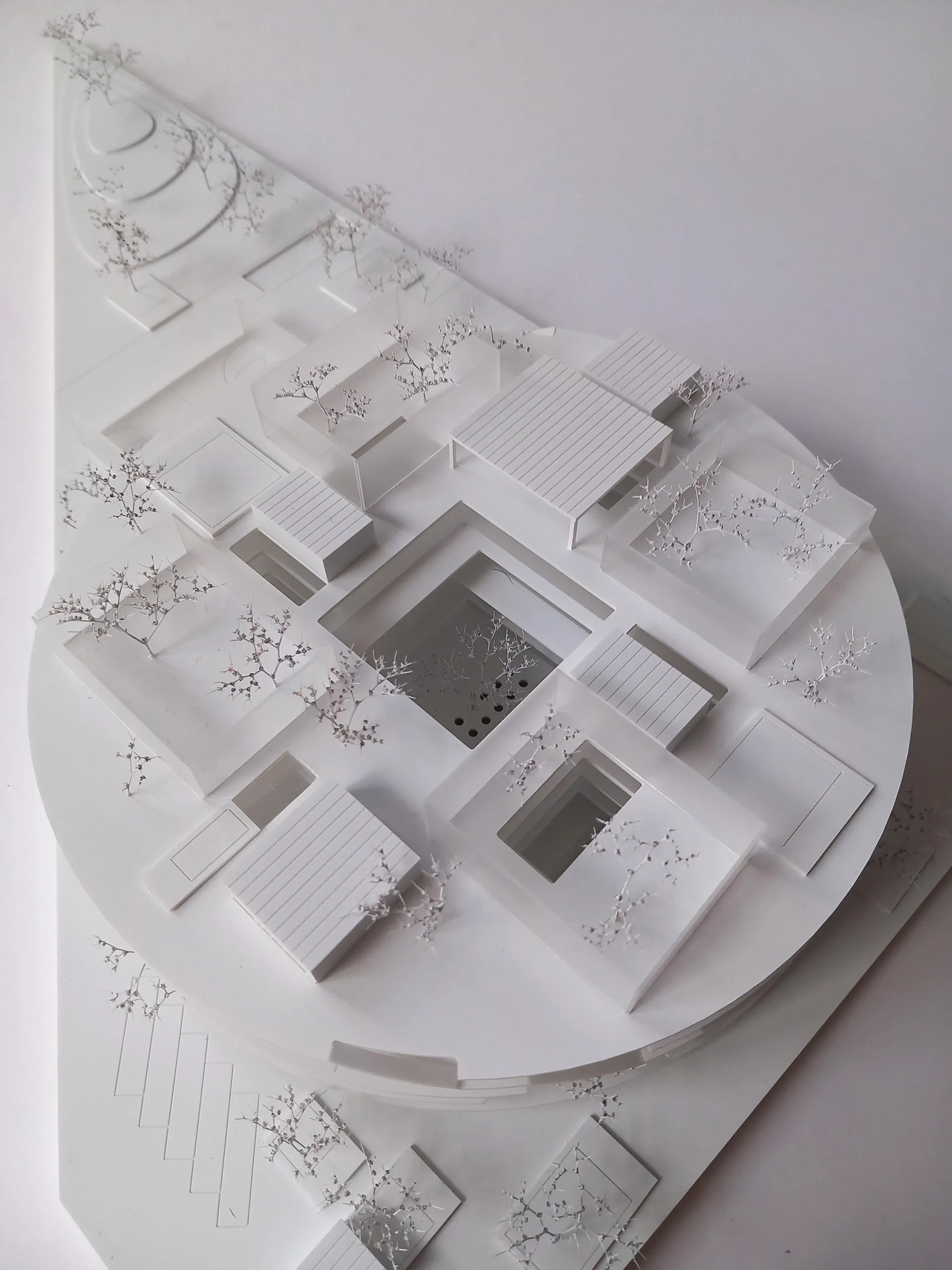
The roof garden features green school areas for exercise and play, pergolas with PV roofing for learning purposes, and water basins with relaxation areas.
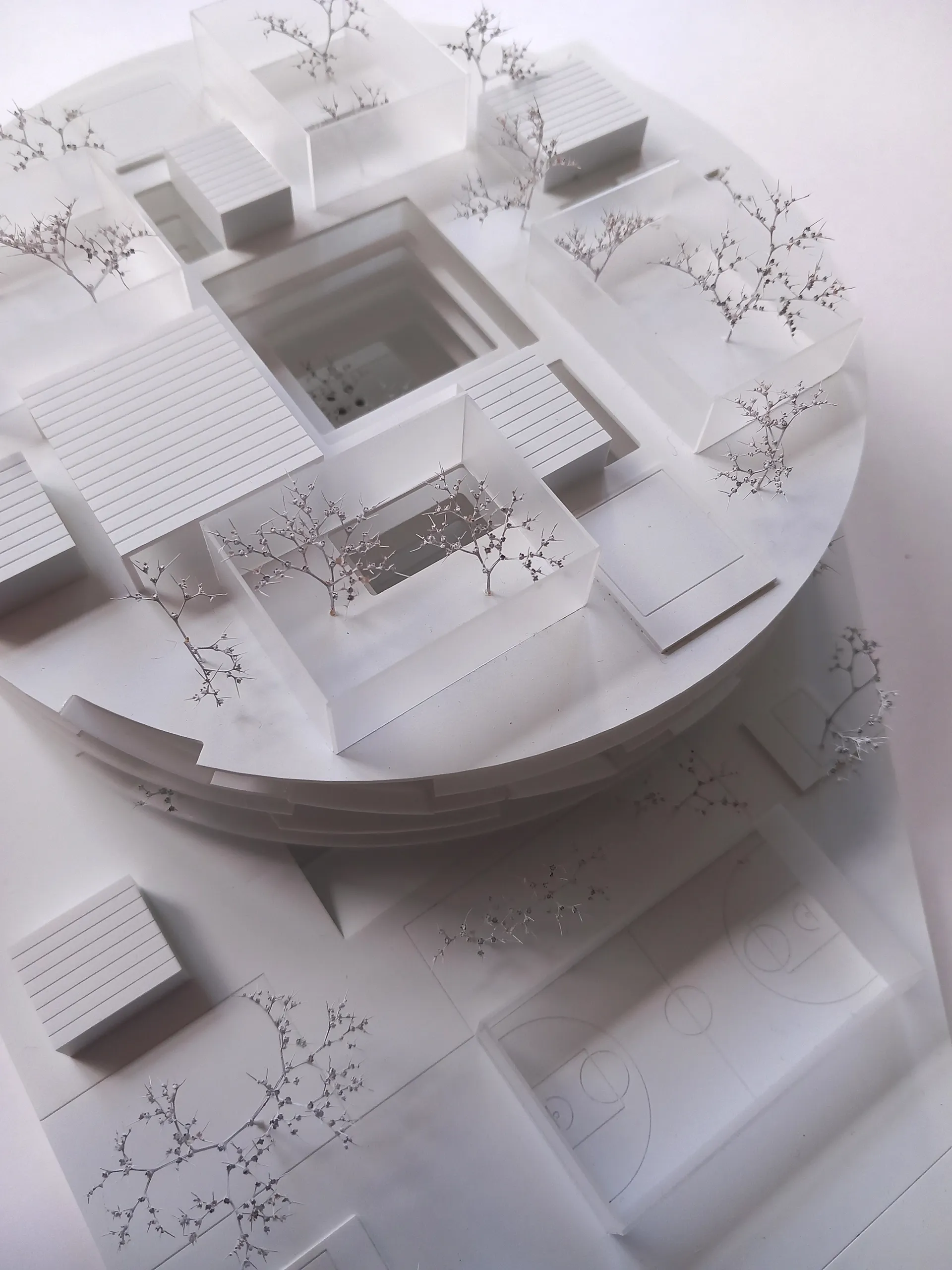
All open spaces on the ground floor are open to the public.
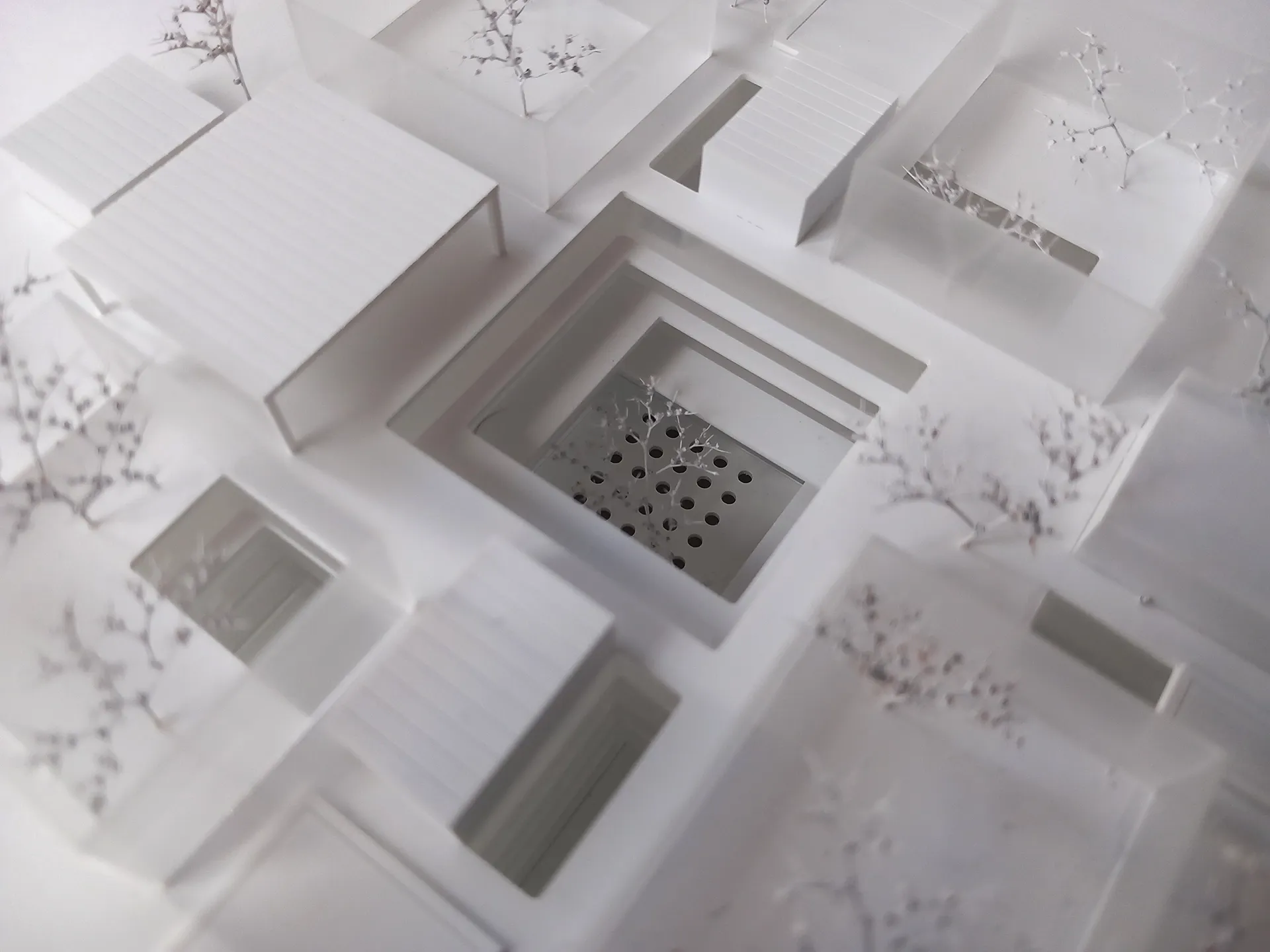
Patios bring light into the depths of the building and create intimate outdoor spaces for the school.
Similar Projects
— All ProjectsA place to meet with space for ideas
With the construction of the new all-day school, the elementary school in St. Georgen an der Stiefing will receive a high-quality extension characterized by a spacious room concept, flexible outdoor areas, sustainable construction, and energy self-sufficiency
